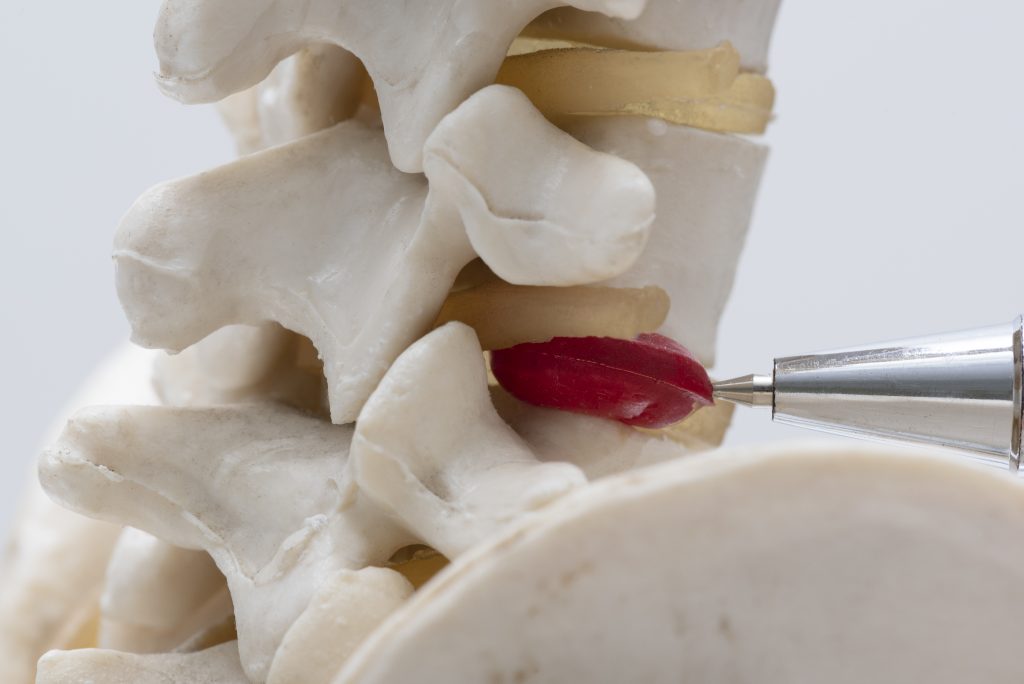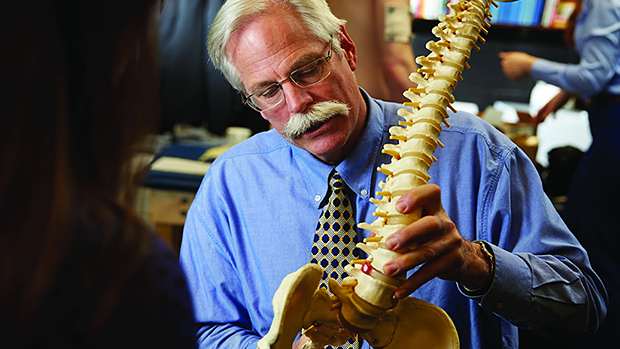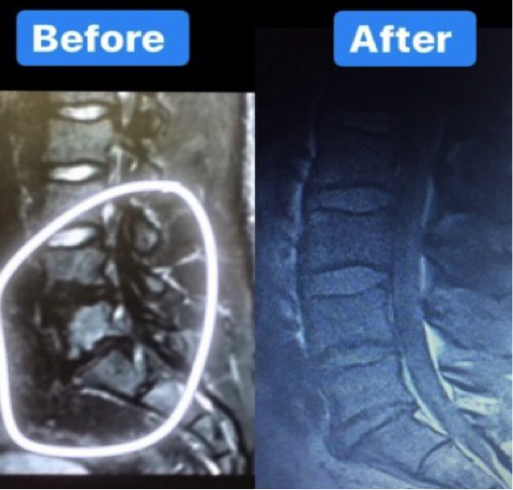Back tweaks are an inevitability.
They happen to people who lifts weights regularly, and those who just look at weights. They happen when doing something as inane as bending over to tie your shoes, as well as when you’re doing some less inane, like, fighting crime at night.
They happen on a Wednesday.
There’s no way to predict when they’ll happen, they just will. Especially if you’re someone who’s had the unfortunate misfortune of it happening once or twice (or many times) in the past.
What can you do when this happens?
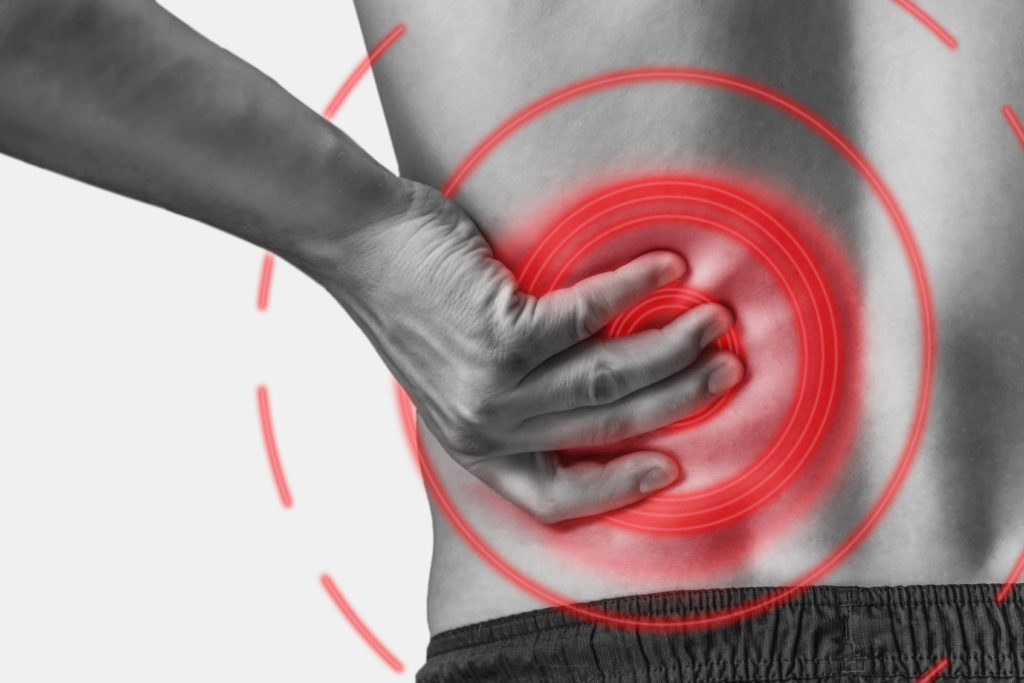
I Jacked My Low Back, Now What(?) Workout
This happened to me several months ago.
The culprit wasn’t anything “cool” like a 1-rep max, or, I don’t know, wrestling a lumberjack.
Nope. Not even close.
This time it came about doing nothing more than bending over to perform my last set of Landmine Rows. As soon as I grabbed the handle I felt that slight zappy “zzzzzzzzzzz” feeling in my lower back and it seized up.
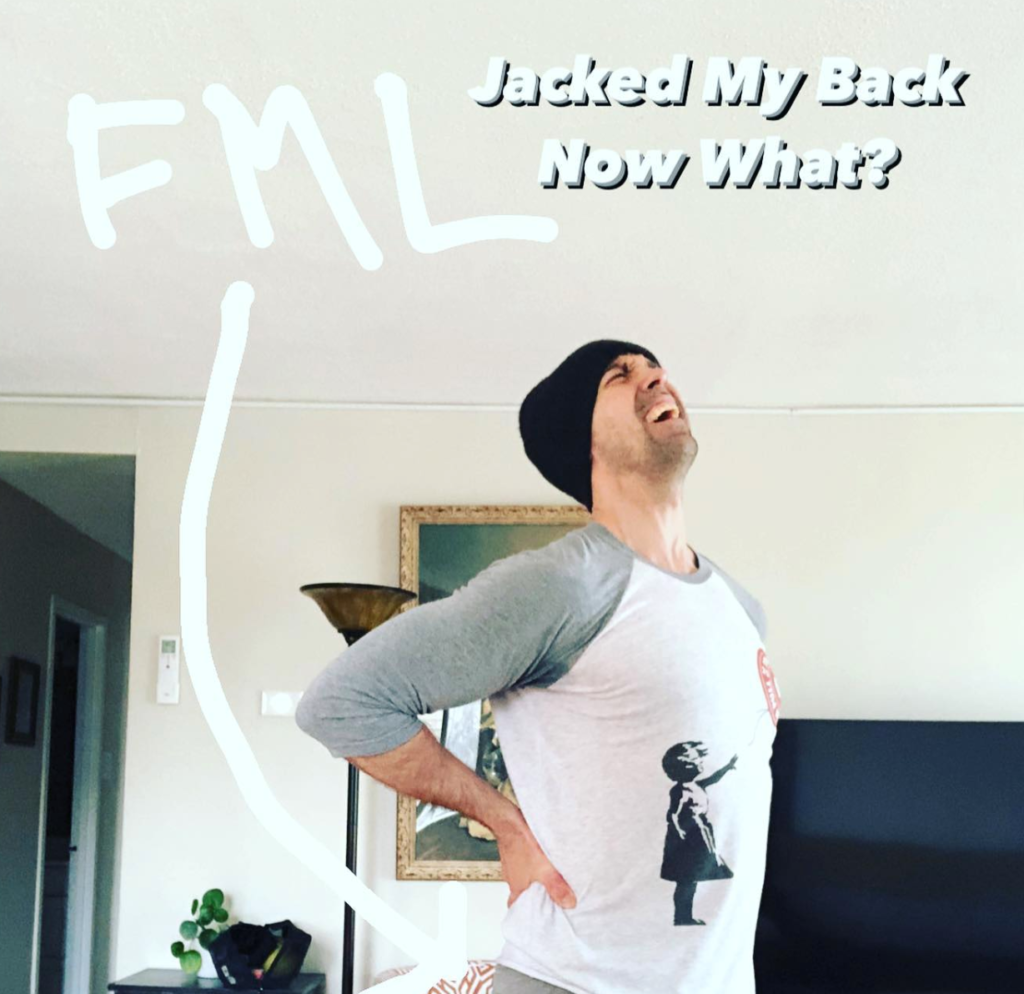
I was hoping to persevere and follow suite with my normal coaching schedule with clients, but it became apparent I was going to be uncomfortable the rest of the day. I went home a little early, stayed horizontal with a heating pad, caught up on all the episodes of Atlanta I hadn’t watched yet (season 3 has been spectacular if you ask me), and woke up the following morning feeling marginally better.
I skipped my scheduled training session that day, but didn’t skip it altogether. Instead I elected to follow my own advice and went into #findyourtrainablemenu mode.
I.e., focusing on what I COULD do rather that what I COULDN’T.
I came up with a brief, albeit BALLER circuit that made my back feel infinitely better. And, in the months since, whenever someone reached out to me asking for advice (or if a client happened to tweak their back1) I’d often revert back to the circuit I laid out for myself and encourage them to follow it as well.
I had been meaning to share the circuit before now, but life has had an uncanny ability of late to get in the way of me doing any writing.
And by that I mean “I’ve been binge watching waaaay too much tv.”
It just so happens, however, that my wife had a bit of a low-back niggle during her training session the other day and I ended up forwarding her my “super secret” workout to tide her over for a few days
She loved it.
In fact, she sent me a text saying something to the effect of…
…”OMG, babe, this back circuit is the best. I am so grateful. In fact, I am so grateful that you never have to empty the dishwasher ever again. And we can watch WWII documentaries whenever you want. Also, let’s make out.”
(just a slight exaggeration there).2
Long story, short…below is the workout. There’s a degree of predictability and a host of exercises that won’t surprise anyone.
But who cares?!?
What works, works.
That said, there’s also a few that should be relatively new.
Shut Up Tony and Show Us the Workout For the LOVE OF GOD
Deadbug
This falls into the “no big surprise” category, but it’s a drill that, when perfected, is an outstanding anterior core exercise (as well as one that helps to dissociate hip movement from LUMBAR movement).
Perform 8-10 repetition per side
90/90 Hip Switches w/ End Range IR
This drill works both hip internal and external rotation simultaneously. Be sure to maintain a braced core throughout the set and really focus on moving through the hips and ramping up tension on the IR hold with each repetition.
Perform 4-5 repetitions per side (one rep = 3-5s IR hold)
Side Mermaid
This is a drill I borrowed from my guy Vernon Griffith. I don’t know how else to explain it other than it feels AWESOME once you’re done.
I mean, it sucks while you’re doing (but feels great afterward).
Here I’m focusing on pressing my bottom knee into the ground (not foot) while also keeping my (bottom) hip off the ground. Also, try to keep your top leg straight throughout the set pushing your heel through the wall. This will really get that glute firing on all cylinders.
1 rep = 5-10s hold.
Perform 3-4 repetitions per side
Glute ISO Hold
Another doozy I got from Vernon and does a superb job of isolating the glutes and learning to “own” spinal position and full-body tension.
Make a fist with one hand out to your side and then lift your OPPOSITE foot (also off to the side) off the ground making sure to maintain a braced core and to NOT move through the lower back. Hold for a 5-10s count each rep.
You should feel this in your glutes, abs, soul, eyeballs, everywhere.
Perform 3-4 repetitions per leg.
Barrel Roll
Nothing fancy, but the idea here is to think about locking your ribcage to your pelvis and rotating the entire body side-to-side as one unit. This can be regressed to performing from the knees if performing them from a full plank is too challenging.
Perform 8-10 repetitions per side.
Tall Kneel to Stand
Press your hands together to engage your core and to increase full-body tension. This will help to posteriorly tilt the pelvis encouraging more of a “canister” position where the pelvis is stacked underneath the ribcage.
Focus on maintaining a neutral spine and moving through your HIPS as you transition from the tall kneeling position to standing (and vice versa).
Do not rush this drill; perform it with intent.
Perform 4-5 repetitions per leg.
Birddog Band Press
Regular Birddogs will work wonders here. Just make sure you’re doing them correctly.
But lets up the ante.
The idea here is to lock in a neutral spine and move through your extremities only. There should be very limited motion through the lower back (I like to tell people there’s a glass of water on the lower back and they don’t want it to spill).
Perform 8-10 repetitions per side.
In-Place Chaos March
I like to think of of these as a “side plank that doesn’t make you want to toss your face into a brick wall.” I think we can all agree the side plank is boring, right?
I mean, it’s a fantastic exercise when done correctly and I’d highly encourage most people to start there. However, we’re on some Liam Neeson “I have a particular set of skills, I will find you, and I will kill you” type of shit right here.
Think about locking your ribcage to your pelvis and keeping your pelvis steady throughout the set; you want to limit any “teeter-tottering.”
Another way to think about it is to pretend as if your hips are on train tracks. They should remain level the entire time.
You also want to keep the “kettlebell quiet.” It shouldn’t be bouncing around while marching in place. Slow and controlled. No rushing!
Perform 8-10 steps/per leg/side
And That’s It
And that’s it.
I typically recommend performing all the exercises above in circuit fashion resting as needed between each one. All told I’d also recommend performing the entire circuit 2-4 times 1-2x per day for several days (or until symptoms subside and you feel you’re able to begin sprinkling in your normal routine again).

